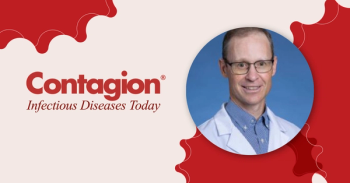
Untreated Hepatitis, Other Conditions Can Lead to Cirrhosis and Death

A mother recounts her newborn son's fatal battle with cirrhosis reminding people of the importance of health and education about this vital organ.
When left untreated, chronic hepatitis B, C, and D can lead to cirrhosis, as well as chronic autoimmune hepatitis. It can happen in immunosuppressed individuals with chronic hepatitis E.1-3
Cirrhosis is the replacement of normal liver tissue with non-living scar tissue. It is always related to other liver diseases and often lead to death, which the latest statistics show has 15.6 deaths per 100,000 population in 2020.
It important to understand how critical one's liver health is in order to not have to suffer through cirrhosis. I went through this with my son, and want people to understand what can happen.
A Mother's Story
Cirrhosis is often assumed to be a disease caused only by alcohol misuse, a stigma rooted in medical thinking from six decades ago. While alcohol-related liver disease remains a major concern, cirrhosis can also develop from viral hepatitis, genetic conditions, congenital abnormalities, toxic exposures, and other non-alcohol-related causes. Unfortunately, this persistent misconception still leads to misunderstanding, judgment, and delays in care for patients whose liver damage stems from entirely different conditions—including infants.
This stigma was painfully clear when my newborn son, Dean, was first examined. When his skin appeared jaundiced, physicians repeatedly questioned whether I had consumed alcohol during pregnancy—an accusation that was both incorrect and heartbreaking, especially as a nurse who had never touched a drop. At just two weeks old, Dean underwent surgery so doctors could understand why his liver was failing. They discovered he had no functional bile ducts, preventing bile from leaving the liver and reaching his intestine—a congenital condition that, at the time, had no known treatment or cure.
Dean’s prognosis was devastating: doctors warned he might not live beyond age three or four. As his mother, I watched him struggle daily—not only with the relentless itching of jaundice but with the wide-ranging, life-threatening consequences of liver cell failure. Without access to essential vitamins processed through bile, Dean’s bones fractured easily. A small scratch bled uncontrollably because his liver could not produce clotting factors. He suffered from cholesterol-related complications, nutrient loss, painful gastrointestinal symptoms, weakened immunity, and hormonal imbalances—each one a reminder of how vital and complex the liver truly is.
Despite these unmistakable signs of liver failure, I later learned that some of his most critical symptoms, including encephalopathy, had not been disclosed to me. When Dean’s physician recommended another risky invasive procedure and insisted on continuing an unapproved medication that caused relentless vomiting, I desperately sought expert guidance. I reached out to researchers at UCSF, who reviewed Dean’s condition and gently advised against the procedure. The next day—Christmas Eve, 1970—Dean passed away.
My grief was immense, but so was my determination. I knew other families would continue to suffer unless the medical community prioritized liver research, education, and public understanding. Far too many people still die from hepatitis viruses and other preventable causes simply because knowledge about the liver—its functions, its vulnerability, and its remarkable importance—remains absent from national health education efforts.
In Dean’s memory, I founded the Dean Thiel Foundation to advance liver research and develop clear, accessible information about the liver’s life-sustaining roles. For more than six decades, I have worked to ensure that no parent, patient, or child experiences the same preventable loss caused by misunderstanding and neglect of the liver’s vital functions.
References
1.Cirrhosis. Mayo Clinic. Accessed November 21, 2025. https://www.mayoclinic.org/diseases-conditions/cirrhosis/symptoms-causes/syc-20351487
2.Sharma B, John S. Hepatic Cirrhosis. In: StatPearls. Treasure Island (FL): StatPearls Publishing; October 31, 2022.
3. Clinical Overview of Hepatitis C. CDC. August 29, 2025. Accessed November 21, 2025.
https://www.cdc.gov/hepatitis-c/hcp/clinical-overview/index.html
4. Cirrhosis of the Liver. American Liver Foundation. Accessed November 21, 2025.
https://liverfoundation.org/liver-diseases/complications-of-liver-disease/cirrhosis/
5.Chronic Liver Disease and Cirrhosis. CDC. Accessed November 21, 2025.
https://www.cdc.gov/nchs/fastats/liver-disease.htm
Newsletter
Stay ahead of emerging infectious disease threats with expert insights and breaking research. Subscribe now to get updates delivered straight to your inbox.























































































































































































































































































